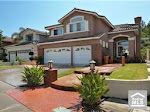How Zillow Is Overestimating the Value of Your Home
Buying a home is arguably the largest investment you can make. You purchase your house, probably put work into it to make it fit your style, and hopefully add improvements along the way that will increase its value. So when it’s time to sell the house, you want to make sure you’re getting the best price for it. That often includes working with a real estate agent in your area, but it can also mean researching online ahead of time to get a good idea of a fair market price.
But the problem is that, sometimes, those online estimates inflate what homes are actually worth, causing a rift in expectations. And when Zillow says the price is higher than a realtor wants to ask, it can create conflict when trying to sell your house.
It’s a conflict that has begun to spring up more frequently, as growing numbers of people turn to online sites to price check before contacting a realtor. A total of 105.4 million people visited real estate websites in January 2015, an increase of about 24% from the year before, according to information provided by analytics website comScore. Within those categories, Zillow accounted for 57.4 million visitors to their site. Trulia, which was formally acquired by Zillow on February 17, accounted for another 36.3 million unique visitors, representing 71% of the total visitors in the real estate category.
Zillow’s staff knows that prices can vary from online to what the sign says in your front yard. It’s why the website has a section devoted to explaining how the “Zestimates” are created, the information that’s used, and some of the variation people can expect in certain areas around the country. Zillow lists Zestimates for about 100 million homes nationwide, but Zillow reports it has an 8% median error rate across the country. That means that about half the Zestimates fall within 8% of the selling price, and about half fall out of that range.
To put that 8% into perspective, assume there’s a house that sells for $350,000. About half the time, Zestimates will show a fair price between $322,000 and $378,000, the 8% spread of about $28,000 on either side of that selling price. But the other half of the time, it could be outside that range. And as always when working with percentages, the value of the home directly impacts the range. For a home worth $500,000, that spread on either side of the selling price could be $40,000.
In certain parts of the country, that variation is even more severe. Twenty-five states have median error rates that fall below the national average, with Virginia and Nebraska at 5.5% and 5.7%, respectively. But West Virginia, at the other end of the spectrum, has a median error rate of 13.6%. Zillow doesn’t keep data on every county across the country, but some such as Dade County in Georgia have error rates of 35%. The highest listed in the data from December 2014 is Apache County in Arizona at 69.4%.
The website uses an algorithm to compute the Zestimates from public information including paid property taxes, the actual sale prices of the home in previous years, the location of the home, the square footage, and the number of bedrooms and bathrooms, among other factors. The algorithm can’t be edited by human input. However, homeowners can “claim” their home online and input more accurate data, which improves the accuracy of the Zestimate they receive. The company says they use public information records, which they acknowledge can sometimes be outdated or incorrect.
If you’ve been taking Zillow’s predictions as a guarantee, you’re not alone. A recent Washington Post articlecites several real estate agents and homeowners confronted with the issue, and the comments section below hosts dozens more. The real problems occur when homeowners assume the Zillow price is the fair market value, and refuse to drop an asking price that’s unrealistic for their market. But according to Zillow CEO Spencer Rascoff, the website was never meant to be an authoritative voice. Instead, Rascoff told Jeremy Hobson of the radio show Here & Now that the site is meant to be a starting point. “Zillow provides all this great free information for consumers as a starting point and the consumer is also undoubtedly much more powerful today than 10 years ago before we started. We think that’s very important,” Rascoff told Hobson.
The Zestimate is not supposed to take the place of an appraisal, and when homeowners are actually looking to put their house on the market, people should still contact experts, Rascoff said. “If you want a more accurate opinion of your value, you should consult an appraiser or a real estate agent,” he said. A shift has happened because of sites like Zillow, Rascoff said, because people can now get a preview of the data that are used to determine the value of their homes. But people still need realtors and other professionals to interpret that data and what it will mean for selling their properties, Rascoff said.
Read more...









































































































